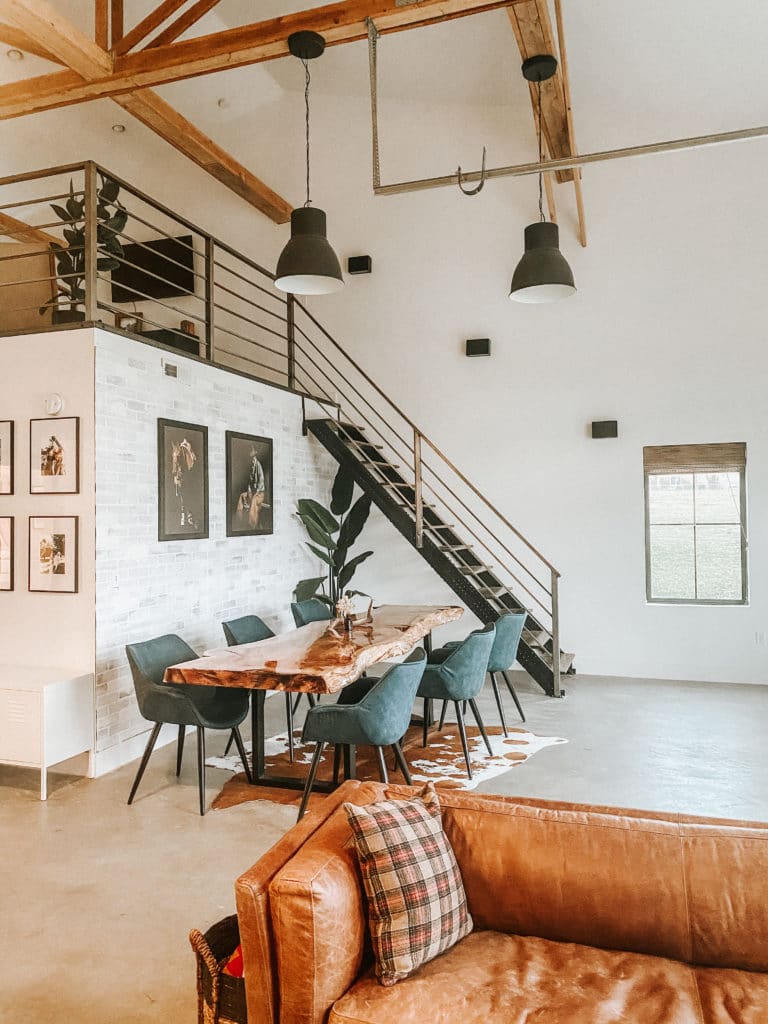Lasting Living in a Barndominium: EcoFriendly Includes to Think About When Building
As the pattern of barndominium living gains traction, the integration of sustainable methods is coming to be increasingly important for ecologically aware home builders. By selecting energy-efficient products, checking out eco-friendly energy choices, and carrying out cutting-edge water preservation systems, one can significantly boost the eco-friendly footprint of these functional frameworks.
Energy-Efficient Building Materials
When creating a barndominium, selecting energy-efficient building products is essential for promoting sustainability and decreasing overall energy consumption. The choice of materials directly influences the building's thermal performance, sturdiness, and ecological footprint. Lasting alternatives such as reclaimed wood, bamboo, and recycled metal not only lessen resource exhaustion yet additionally decrease waste in landfills.
Furthermore, concrete, when sourced sensibly, can be an efficient energy-efficient material. It offers superb thermal mass, assisting to control interior temperatures and lower dependence on home heating and cooling systems. High-performance home windows with low-E coverings and insulated frames can dramatically improve energy efficiency by lessening warm transfer.
An additional factor to consider is the setup of energy-efficient roof covering materials, such as metal, which reflects solar energy, thereby reducing air conditioning expenses. Incorporating these products not only sustains a greener way of life but can additionally cause long-term economic savings with decreased power expenses.
Lasting Insulation Options
:max_bytes(150000):strip_icc()/ConvertedBarn-Barndominium-e4e7f75eaca64a9eb5674917da3b20d6.jpg)
Cellulose insulation is originated from recycled paper products, offering an eco-friendly option with outstanding thermal efficiency. Its capability to resist wetness and reduce air leak makes it specifically effective in keeping constant interior temperatures (learn more). Sheep's woollen insulation is one more all-natural alternative, giving premium breathability and wetness monitoring while being naturally degradable
For those considering spray foam, choosing items with low international warming capacity and high eco-friendly content can additionally boost sustainability. Barndominium builder. Additionally, reflective insulation panels made from recycled products can be incorporated to improve energy performance by reducing warm loss
Inevitably, buying lasting insulation not just reduces energy usage but likewise advertises a comfy living space, lining up with the concepts of eco-friendly living. Cautious factor to consider of insulation products will add to the long-lasting sustainability and performance of a barndominium.
Water Preservation Systems
Applying reliable water preservation systems is important for maximizing sustainability in a barndominium. One of the most impactful methods is the installment of rain harvesting systems. By accumulating and saving rain from the roof covering, property owners can significantly decrease their reliance on municipal water supplies while providing a sustainable source for irrigation and non-potable uses.
Additionally, integrating greywater recycling systems can further boost water preservation initiatives - learn more. These systems permit the reuse of wastewater from sinks, showers, and laundry, carrying it back into the watering system or commodes. This method not only conserves water yet likewise lowers the worry on septic tanks
Low-flow fixtures and appliances, such as taps, showerheads, and bathrooms, are also vital elements in water conservation. These components can decrease overall water use without compromising performance, making them an effective selection for eco-conscious home builders.
Last but not least, landscaping with drought-resistant plants can lessen water requirements for outdoor areas. Native and adjusted plant varieties typically need much less water and upkeep, adding to a sustainable living environment. By executing these water conservation systems, barndominium owners can develop an extra environmentally friendly and resource-efficient home.
Renewable Energy Sources
Utilizing renewable power page resources is an essential element of sustainable living in a barndominium. These panels convert sunshine right into electrical energy, considerably decreasing dependence on fossil gas and decreasing energy bills.
One more sensible alternative is wind power. Mounting a little wind generator can supply an additional resource of renewable power, especially in locations with constant wind patterns. Wind turbines transform kinetic energy from the wind right into power, matching solar power by creating power during cloudy days or at evening.
Geothermal heating and cooling systems can additionally add to power effectiveness. By using the stable temperature levels underground, these systems can considerably lower the energy needed for heating & cooling, making them ideal for barndominiums in different environments.
Incorporating these renewable resource resources not just promotes a lasting lifestyle however additionally enhances the total worth of the home. By purchasing such innovations, home owners can achieve energy freedom, reduce their carbon impact, and contribute to a more sustainable future.
Eco-Friendly Landscape Design Concepts
Developing a green landscape improves both the visual allure and sustainability of a barndominium. By incorporating native plants, property owners can promote biodiversity while decreasing water usage and maintenance. Indigenous species are well-adapted to the regional climate, needing less irrigation and fertilizer.
Additionally, think about carrying out permaculture concepts, which concentrate on creating landscapes that work sympathetically with nature. This can consist of growing edible yards, fruit trees, and pollinator-friendly blossoms to produce a self-sufficient ecosystem. Rain gardens, developed to capture and absorb stormwater, are another reliable means to take care of runoff and enhance dirt wellness.
Utilizing organic mulches and compost not only enriches the soil yet additionally minimizes the requirement for chemical plant foods. Including absorptive paving products for walkways and driveways can help protect against water drainage, promoting groundwater recharge.
Final Thought
